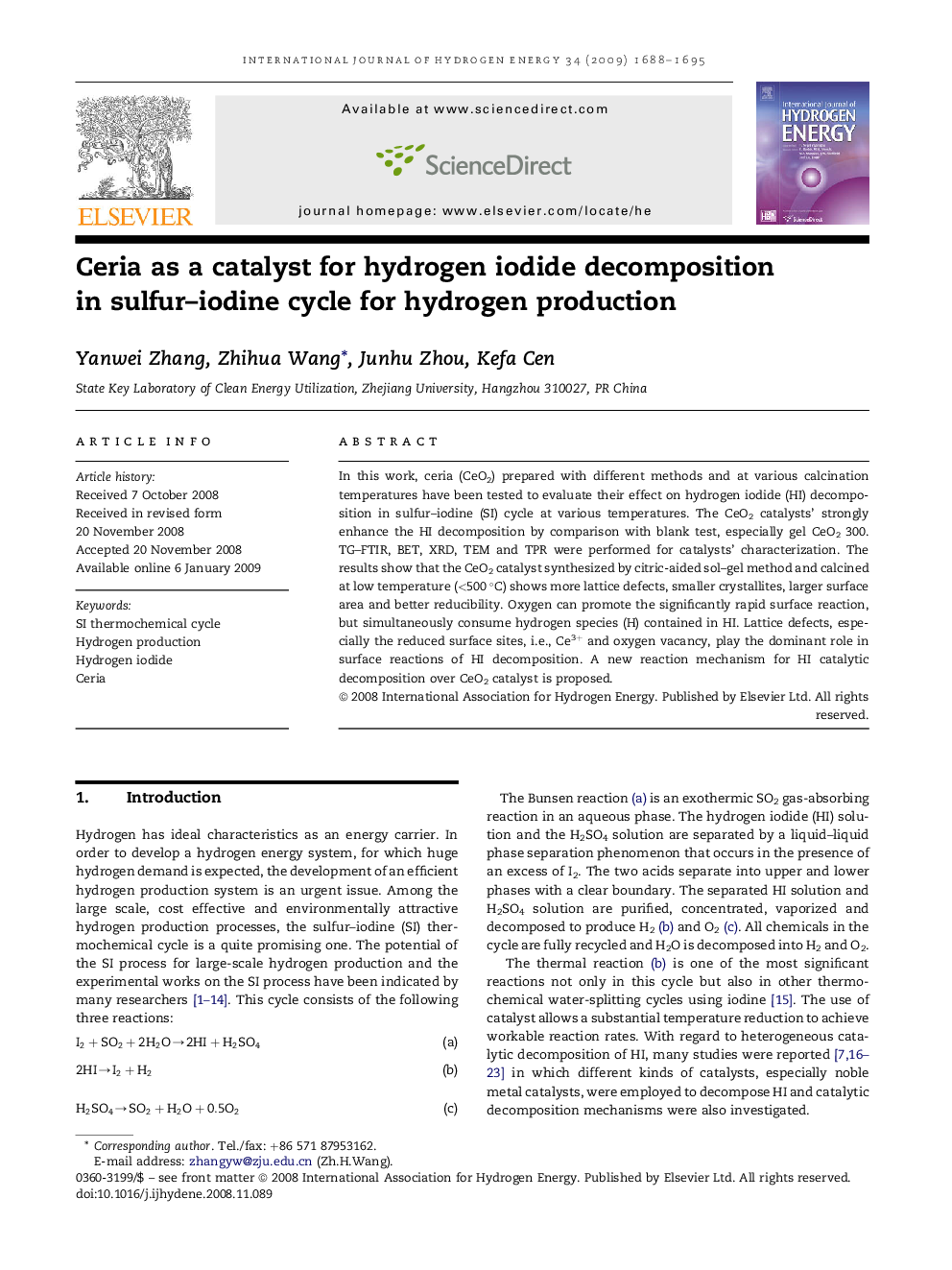| Article ID | Journal | Published Year | Pages | File Type |
|---|---|---|---|---|
| 1274288 | International Journal of Hydrogen Energy | 2009 | 8 Pages |
In this work, ceria (CeO2) prepared with different methods and at various calcination temperatures have been tested to evaluate their effect on hydrogen iodide (HI) decomposition in sulfur–iodine (SI) cycle at various temperatures. The CeO2 catalysts' strongly enhance the HI decomposition by comparison with blank test, especially gel CeO2 300. TG–FTIR, BET, XRD, TEM and TPR were performed for catalysts' characterization. The results show that the CeO2 catalyst synthesized by citric-aided sol–gel method and calcined at low temperature (<500 °C) shows more lattice defects, smaller crystallites, larger surface area and better reducibility. Oxygen can promote the significantly rapid surface reaction, but simultaneously consume hydrogen species (H) contained in HI. Lattice defects, especially the reduced surface sites, i.e., Ce3+ and oxygen vacancy, play the dominant role in surface reactions of HI decomposition. A new reaction mechanism for HI catalytic decomposition over CeO2 catalyst is proposed.
